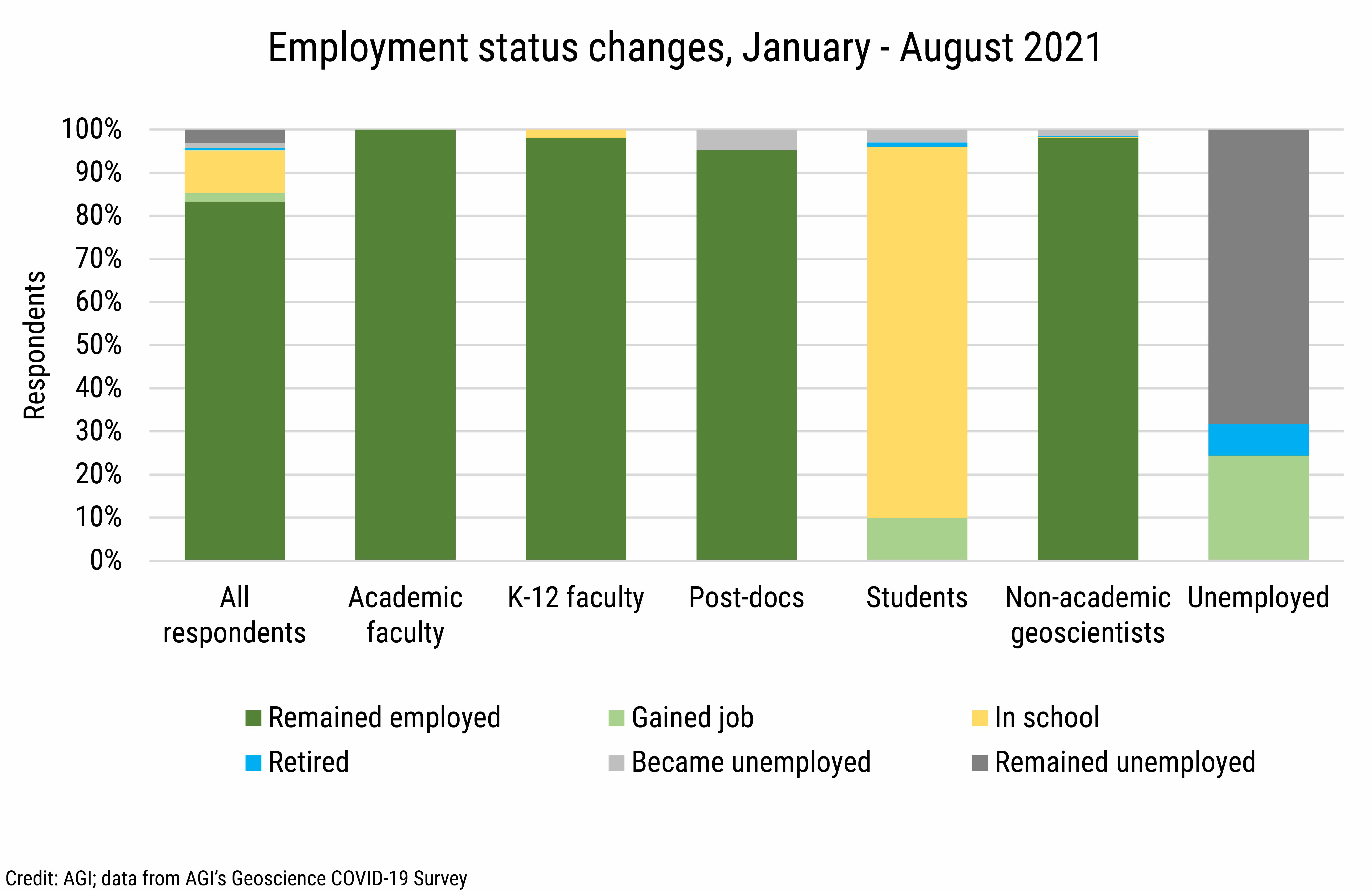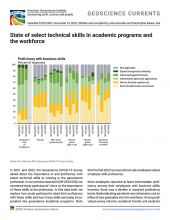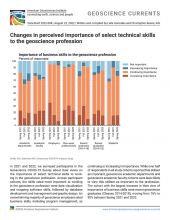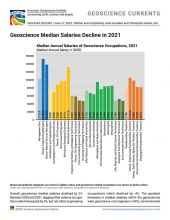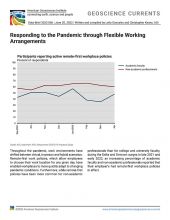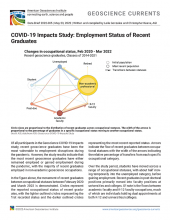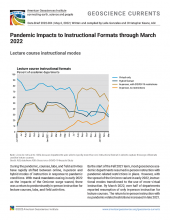The pandemic has impacted the economy and employment in many ways. However, the geosciences appear to have been a generally steady field for employment during the pandemic. Looking at non-retired participants in the study, most participants (83%) remained employed during 2021, while a small percentage gained employment (2%), retired (1%), or became unemployed (1%). In addition, 10% of participants remained in school and 3% remained unemployed.
By cohort, over 90% of academic faculty, K-12 faculty, non-academic geoscientists and post-doctoral fellows have remained employed since the start of 2021. In addition, a small percentage (2%) of K-12 faculty returned to school over this period. For those geoscientists who were unemployed in January 2021, 24% gained employment, 7% retired, 68% remained unemployed as of August 2021. It is important to note, however, that the cohort of unemployed geoscientists who have remained unemployed through August 2021 represents 3% of the total study population over this period. Unemployment rates across cohorts was highest for post-doctoral fellows (5%) and students (3%), and lowest for non-academic geoscientists (1%).
We will continue to provide current snapshots on the impacts of COVID-19 on the geoscience enterprise throughout the year. For more information, and to participate in the study, please visit: https://www.americangeosciences.org/workforce/covid19
Funding for this project is provided by the National Science Foundation (Award #2029570). The results and interpretation of the survey are the views of the American Geosciences Institute and not those of the National Science Foundation.


